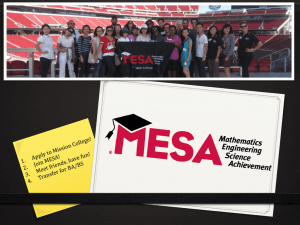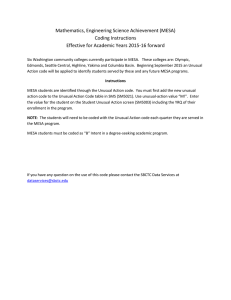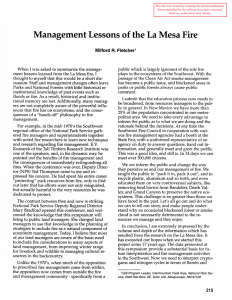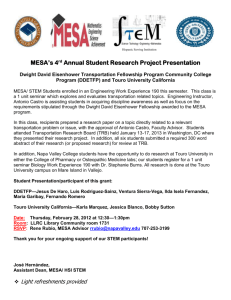Transforming the Energy Storage Market
advertisement
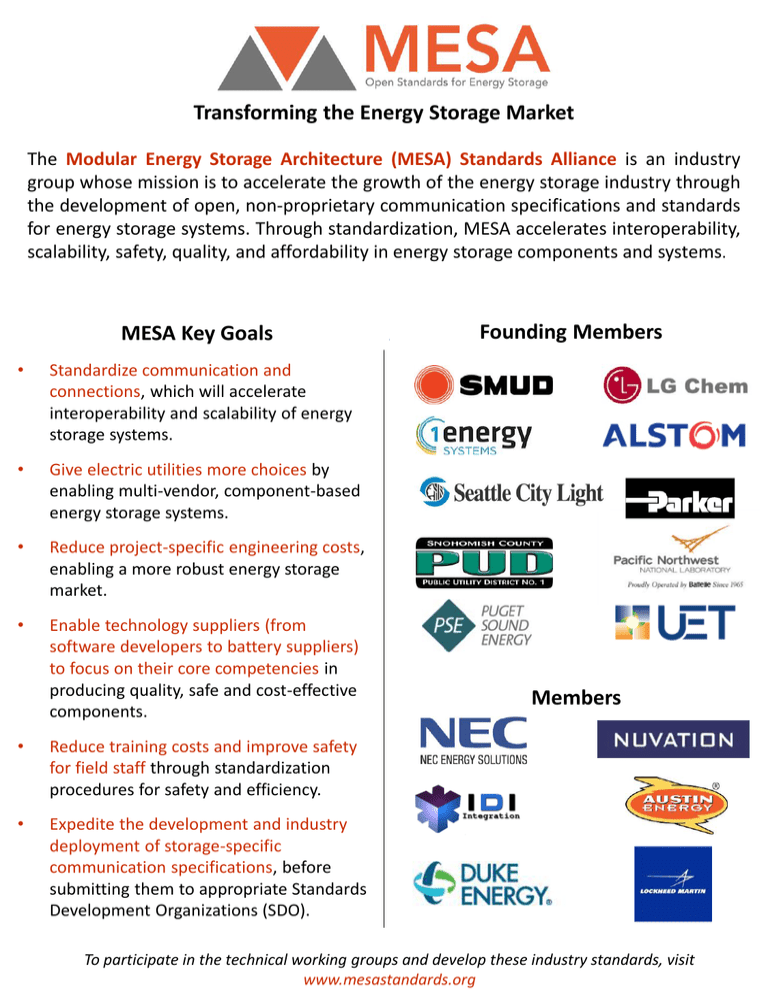
Transforming the Energy Storage Market The Modular Energy Storage Architecture (MESA) Standards Alliance is an industry group whose mission is to accelerate the growth of the energy storage industry through the development of open, non-proprietary communication specifications and standards for energy storage systems. Through standardization, MESA accelerates interoperability, scalability, safety, quality, and affordability in energy storage components and systems. MESA Key Goals • Standardize communication and connections, which will accelerate interoperability and scalability of energy storage systems. • Give electric utilities more choices by enabling multi-vendor, component-based energy storage systems. • Reduce project-specific engineering costs, enabling a more robust energy storage market. • Enable technology suppliers (from software developers to battery suppliers) to focus on their core competencies in producing quality, safe and cost-effective components. • Reduce training costs and improve safety for field staff through standardization procedures for safety and efficiency. • Expedite the development and industry deployment of storage-specific communication specifications, before submitting them to appropriate Standards Development Organizations (SDO). Founding Members Members To participate in the technical working groups and develop these industry standards, visit www.mesastandards.org MESA Standards Alliance’s Focus Standards-Based Control System MESA’s efforts focus on the development of the MESA-ESS and MESA-Device Specifications. Please join MESA to participate in the working group and guide the development of these MESA-ESS Specifications. MESA-ESS is initially addressing how energy storage systems communicate with the utility’s grid control (SCADA/DMS), while potentially extending these communication specifications to aggregators and facility energy management systems (FDEMS) that monitor and control storage assets. MESA launched a technical working group in March 2015 to develop these MESA-ESS Specifications. MESA-Device addresses how energy storage components are packaged and arranged, electrically connected and able to communicate with each other and other operational components. MESA-Device Specifications are built on the Modbus protocol. MESA and the SunSpec Alliance released the first draft energy storage system specification, MESADevice (referred to as the Energy Storage Model Specification by SunSpec), for public review and adoption in October 2014. The draft specification can be found at www.mesastandards.org and www.sunspec.org. Why Standardize? MESA-ESS is developing standardized communication specifications between the ESS and control system such as SCADA. Potential to extend to aggregators or FDEMS that manage storage assets. These specifications will be submitted as standards to the relevant standards organization. MESA-Device specifies standardized connections between components within the ESS. Grid-connected energy storage promises large potential benefits. And yet, before safe, affordable energy storage can deliver on its promise, electric utility customers and their suppliers must solve significant problems, many which stem from lack of standardization. Standards are required for large-scale deployment of any technology. The personal computer industry grew from just a few to millions of units per year, while dramatically improving price-performance, based on standards for its software and hardware components. Like other industries, the energy storage industry needs to organize for scale, based on a cohesive industry visitation and technology standards. MESA Standards clear barriers to growth in energy storage. By enabling standardization in connections between components, MESA allows utilities and vendors to focus on delivering more cost-effective electricity to more people. To participate in the technical working groups and develop these industry standards, visit www.mesastandards.org
